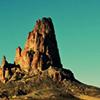
Research Your Location
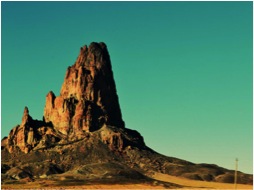 In order to take dynamic photos in any location, from the desert to a local community garden it is essential to research the location. The more knowledge an individual has on the specific location, the more success they will have in capturing a beautiful photo. Find out as much as possible about the location including the best time of the year to take photos. Some places are more dynamic in different seasons, or have high tourism rates at specific time of the year, which is undesirable as they may distract from the photo. Scout the vantage points at different places, figure out what time of the day that the light is optimal, and consider the location of the sun, and the moon as that can affect the look and lighting of a location as well.
In order to take dynamic photos in any location, from the desert to a local community garden it is essential to research the location. The more knowledge an individual has on the specific location, the more success they will have in capturing a beautiful photo. Find out as much as possible about the location including the best time of the year to take photos. Some places are more dynamic in different seasons, or have high tourism rates at specific time of the year, which is undesirable as they may distract from the photo. Scout the vantage points at different places, figure out what time of the day that the light is optimal, and consider the location of the sun, and the moon as that can affect the look and lighting of a location as well.
Gear
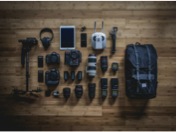 Before getting into any camera equipment the first tool that is extremely helping when starting off nature photography is the Internet, more specially GPS devices and street view applications. Before venturing out to shoot, utilize these electronic maps to really plan out the shots according to the local typography and landscape features. Once you have done that you can focus on the obvious essential parts of camera kits being a camera system, zoom lens and tripod. In bright light one should use a lens hood, a tripod is useful for capturing movement with the photos remaining sharp, and a zoom lens, or any other type of lens for that matter will zoom in close, or wide angle depending which you use.
Before getting into any camera equipment the first tool that is extremely helping when starting off nature photography is the Internet, more specially GPS devices and street view applications. Before venturing out to shoot, utilize these electronic maps to really plan out the shots according to the local typography and landscape features. Once you have done that you can focus on the obvious essential parts of camera kits being a camera system, zoom lens and tripod. In bright light one should use a lens hood, a tripod is useful for capturing movement with the photos remaining sharp, and a zoom lens, or any other type of lens for that matter will zoom in close, or wide angle depending which you use.
Have Passion
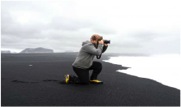 As a novice nature photographer with their first ever nature camera or camera system, the developed technique may not be evident in the photos, but the passion certainly will be. Whether it is a lifelong passion of saving the polar ice caps and shooting in Greenland, or simply shooting the progression of a family garden the passion and care will show through by capturing the spirit of the environment in the photos. It is important to focus on your personal style and technique, check other photos for inspiration but do not copy.
As a novice nature photographer with their first ever nature camera or camera system, the developed technique may not be evident in the photos, but the passion certainly will be. Whether it is a lifelong passion of saving the polar ice caps and shooting in Greenland, or simply shooting the progression of a family garden the passion and care will show through by capturing the spirit of the environment in the photos. It is important to focus on your personal style and technique, check other photos for inspiration but do not copy.
Lighting
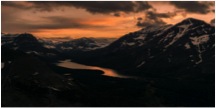 As far as lighting goes, look for unique combinations of shadow, light and color. Morning light will yield yellow warm colors, whereas late afternoon evening light will have a hint of red. Explore a specific area or landscape at different times to plan and previsualize the shots based on the lighting at the particular region or time of the day. Where the sun is can impact the type of lighting for the photo, for example if the sun is higher in the sky, side lighting is the better approach. Side lighting is generally best for landscape photographs because of the contrast between light and shadow, which creates depth.
As far as lighting goes, look for unique combinations of shadow, light and color. Morning light will yield yellow warm colors, whereas late afternoon evening light will have a hint of red. Explore a specific area or landscape at different times to plan and previsualize the shots based on the lighting at the particular region or time of the day. Where the sun is can impact the type of lighting for the photo, for example if the sun is higher in the sky, side lighting is the better approach. Side lighting is generally best for landscape photographs because of the contrast between light and shadow, which creates depth.
Composition
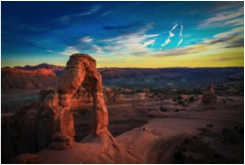 Composition in photography is arranging elements within the photo in a way that suits the work best, it is a way of guiding the viewer's eye toward the most important element of the piece, essentially what looks best to the eye. To achieve a desirable composition avoid clutter in the photo, include foreground interest, turn the flash on and off, explore the different camera modes of landscape mode, macro mode, and panoramic mode. The focal length and angle at which the camera is, or the subject is effects the composition, for something like nature, the photographer would have to move to adjust the composition, not the subject itself as creeks, and leaves cannot move on their own.
Composition in photography is arranging elements within the photo in a way that suits the work best, it is a way of guiding the viewer's eye toward the most important element of the piece, essentially what looks best to the eye. To achieve a desirable composition avoid clutter in the photo, include foreground interest, turn the flash on and off, explore the different camera modes of landscape mode, macro mode, and panoramic mode. The focal length and angle at which the camera is, or the subject is effects the composition, for something like nature, the photographer would have to move to adjust the composition, not the subject itself as creeks, and leaves cannot move on their own.
The Rule of Thirds
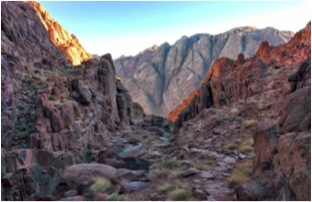 The rule of thirds is a well-known rule of thumb for photography, and is quite applicable to nature photography, especially for a beginner. With a basic understanding it will elevate a photo without having to buy a new lens or camera equipment. The rule states to break the image down into thirds vertically and horizontally, looking like a grid, and within this grid the four intersections of the grid are where the points of interest should be. The idea is that by placing the points of interest at the intersection that the photo becomes more interesting and balanced. When shooting landscapes it is useful to position the horizons on a horizontal line of the grid.
The rule of thirds is a well-known rule of thumb for photography, and is quite applicable to nature photography, especially for a beginner. With a basic understanding it will elevate a photo without having to buy a new lens or camera equipment. The rule states to break the image down into thirds vertically and horizontally, looking like a grid, and within this grid the four intersections of the grid are where the points of interest should be. The idea is that by placing the points of interest at the intersection that the photo becomes more interesting and balanced. When shooting landscapes it is useful to position the horizons on a horizontal line of the grid.
Shoot Many Photos
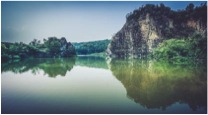 The more an individual uses a camera, the more they learn as they go. Experiment with different angles and focal point lengths. Use different photographic filters, use water as a mirror, or a line of rocks on the beach as foreground, the options are endless. The more photos one takes in different ways, the better chance that one or more of the photos are stellar.
The more an individual uses a camera, the more they learn as they go. Experiment with different angles and focal point lengths. Use different photographic filters, use water as a mirror, or a line of rocks on the beach as foreground, the options are endless. The more photos one takes in different ways, the better chance that one or more of the photos are stellar.
Post Processing
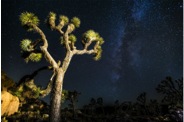 After taking photos, the way they are handled can impact the quality of the image just as much as the quality of the lens the photographer is using. Shoot the nature photos in RAW and edit with Photoshop for the most effective outcome. There are editing tools with cropping and re-framing, among many other things to experiment with.
After taking photos, the way they are handled can impact the quality of the image just as much as the quality of the lens the photographer is using. Shoot the nature photos in RAW and edit with Photoshop for the most effective outcome. There are editing tools with cropping and re-framing, among many other things to experiment with.
Additional reading:
Equipment - Information about how to use the right equipment to use.
Nature Stock Photos - How to sell and market photos as stock photos. When shooting landscapes it is useful
Improve Photo Quality - Information about shutter speed and aperture.
Flora Photography - Tips on how to shoot flora photography aka flowers.
Nature Photographer Job Description - Information and statistics about professional nature photographers
How to Make Better Nature Photos - Advice on catching more compelling scenes in nature.
Landscape Photography - Tips from a pro for better landscape photos.
Tips For Amateurs - Information about how to get started with landscape photography.
Essential Equipment for Nature Photographers - Basic information about what equipment is best for nature photography.
Nature Photography- Tips and advice for nature photography

